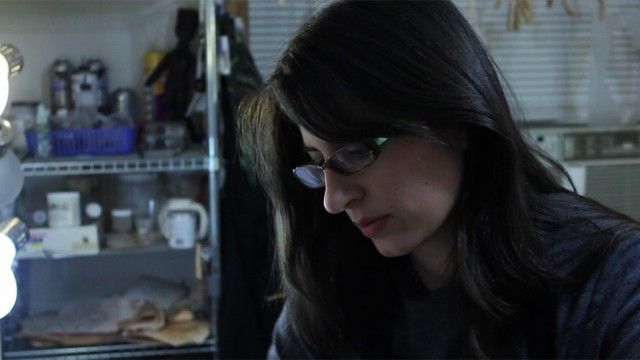Photo courtesy of Victoria Febrer.
By Nicola Shannon
Arts and Features Copy Editor
Art was my favorite middle school class, always enjoyable even as the other subjects started to clog up with busywork. It was like a break from school, a creative recess, and I loved it. But looking back, neither the students nor the school really took it seriously. We were introduced to basic color-mixing and shading techniques that were never shown as having much importance outside of crafty skill, and the art teacher was not much more than a babysitter. By high school, I found myself convinced that my love for art was only valuable as a fun hobby, and could only be used to make a living if I was on the same bar as Picasso.
But how could I even hope to be, with the halfhearted teaching I had received?
Victoria Febrer, a teacher, artist, MFA graduate student and the Goldberg Fellow at Stony Brook University, has turned this unenthusiastic trend of artistic instruction on its head.
This January, she was awarded the K. Patricia Cross Future Leaders Award from the American Association of Colleges and Universities, and is the first MFA ever to receive this award. The award “recognizes graduate students who show exemplary promise as future leaders of higher education; who demonstrate a commitment to developing academic and civic responsibility in themselves and others; and whose work reflects a strong emphasis on teaching and learning,” according to the AAC&U website. Febrer, along with nine other award recipients from universities around the country, attended the AAC&U’s Annual Meeting in Washington D.C. to talk about her goals and experience in education.
“People who love teaching are sometimes turned off from teaching because it’s challenging right now in our society to make a stable income as a teacher because it’s a field that’s really being de-professionalized,” said Febrer. “I think that awards like this are really important in fostering dialogue between those of us who are really passionate about teaching and the people who are able to make decisions about this.”
Victoria Febrer has been teaching since she was an undergraduate student at the Cooper Union, when she had the opportunity to teach a free art course with their Saturday Program for high school students in New York City. She has been teaching ever since for many non-profit organizations, including the Covenant House Crisis Center, the Cooper-Hewitt Smithsonian National Design Museum, Free Arts NYC, the 92nd Street Y, and the Center for Arts Education, as well as at Stony Brook University, Nassau Community College, and the Cooper Union. Her art has been exhibited in the United States, Spain, Belgium, Ireland and Japan.
“What I try to do here is teach a class that every student can incorporate into their learning and into becoming a specialist in their field,” Febrer said. “I try to structure my class always around projects that present complex design problems.”
This style of teaching, experienced in Febrer’s Foundations of Idea and Form class, brought together a variety of students of different majors and backgrounds as they created and explained their projects and the thought processes behind them.
“The guidelines for each project were frustratingly vague, forcing us to explore our imaginations and find the best way to represent our ideas,” said Michael Varley, a senior environmental studies major.
Febrer believes that bridging the gap between different backgrounds and specialties is very important at a school like Stony Brook where students that may be very specialized in either the sciences or the humanities are put in situations where they have to function together as one group, club, or class.
“The truth is that when you become specialized in something, you then become part of a team of people with other specializations,” Febrer said. “That’s how innovation happens: when people are communicating.”
Morgan Macklin, a junior applied math and statistics and Asian American studies double major, was also a student in Febrer’s Idea and Form class over the fall semester.
“She takes an interest in you beyond the class, treats you as an equal, then inspires you,” she said of Febrer. “She lives for what she teaches…an amazing professional, artist, and person.”
Victoria Febrer has not only proven that the artistic disciplines are both professional and invaluable, but she has personally helped students recognize the fact that we have power as students, and that there is no area of knowledge that is unavailable to us.


